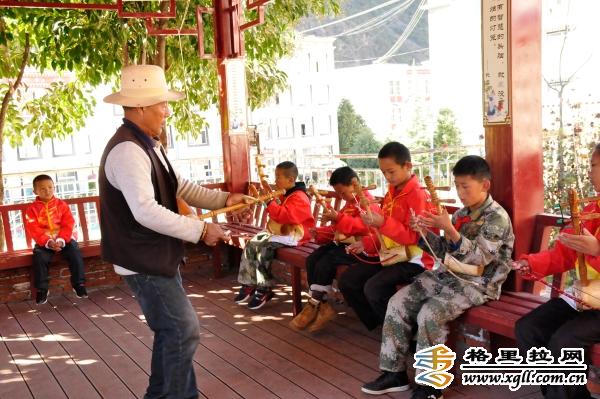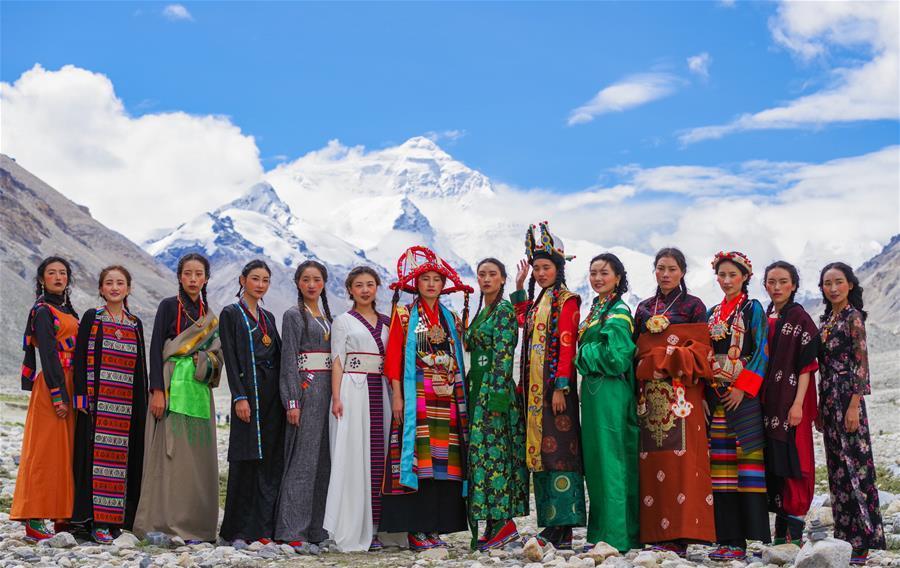Paradise inside Mt. Qomolangma
On the map, one of the five major valleys in Mt. Qomolangma, Chentang Valley, looks like a dragon meandering through the hills and sleeping inside the mountains. This is also where the cloud-shrouded Chentang Township, part of Dingjie County in Tibet, is located.
Chentang Town is located 150 km from Dingjie County. In early 2017, roads were being built in the region. In October of 2018, during the peak of the road foundation project along provincial route 514, which reaches the Town, we visited the area.
Before our trip, our local friends reminded us that a trip there will be about more than scenic sights and cultural experiences, the hectic trip will be part of the experience.
They were right. The journey to Chentang Town involved a long road on steep hills. Around 3 AM, we left from Dingjie County, when the moon was still in the sky, and the night was foggy. As the SUV drove along the 5600-meter high snowy mountains, one of our travelers experienced severe altitude sickness. As we got off the car to rest, we realized we were driving along a steep mountain on the left and a deep valley to the right. Along the way, we saw many giant rocks, and waterfalls were often seen, some were thunderous and some were subtle.
Around 9 AM, we suddenly heard loud noises of a river crashing against the valley. The altitude was around 2040 meters. “We’re almost there!” The driver said. This is one of the giant collapsed areas and after we left that spot, we entered a clearing that resembled a paradise—we were in the middle of a vividly green primordial forest, where trees grew from the foot of the mountain all the way to its peaks, with deep fog throughout. After the familiar barren sights of the Qinghai-Tibet Plateau, we were shocked at the green leaves.
Books have said that “Chentang is like a green pearl nestled in the primordial forests of the sub-tropical mountain climate of southeast Mt. Qomolangma. The forestation rate is 98%, from altitudes of 2000 to 5600 meters, the vegetation is throughout. The warm air from the Indian Ocean goes north every year via the Chentang Valley, which helps Chentang Town enjoy fog year-round and numerous waterfalls.” Only a personal visit could make one experience the grandeur of this area.
The homes of Chentang are often built along more flat hills. The houses have red roofs, with walls made of stone bricks. Floors are made from local wood and creak when walked on. Homes could be seen from the valley to the mid-mountain area, which is at a few hundred meters altitude. Every lookout would present one with a stunning watercolor portrait.
Chentang Town has a population of around 2000, and its own cultural customs. Women like to decorate themselves with bird feathers and flowers to present a striking look.
Chicken bone wine is a specialty of Chentang Town. The wine is very unique in its making and drinking. A grain grown on local hills, resembling chicken feet in shape, is used to make the wine. The grain could be ground into flour, cooked, and used as food. Nowadays, the grain is used mainly for making wine. Locals first put unshelled grains into a ceramic container for fermenting, when ready to drink, the wine is poured into custom-made bamboo tubes. After adding some boiled water into the bamboo tube, a chopstick-shaped wood or bamboo straw is used to drink the chicken bone wine.
As evening arrives, friends and family would often gather to enjoy the wine, with every person a pot of wine, adding hot water to the bamboo tube as they drank. People danced and sang, and the festivity would last until late in the night. That night, one of our reporters tried the wine and quickly became inebriated amidst the celebration.
Editor:Yanina
Tibet Stories

A guardian of Shinze culture
In order to better inherit the Shinze culture, Wangdu has organized a group of more than 20 ...
Latest News
- Egypt uncovers intact 4,400-year-old pharaonic tomb near Giza pyramids
- UN climate conference adopts rulebook for implementing Paris deal
- Service of Chinese Americans in World War II to be formally recognized
- Germany suffers severe Santa shortage as Christmas draws near
- 7-year-old in good health, border agents said; then she died

